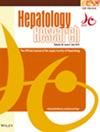Trajectories of hepatic steatosis and incidence of cardiovascular disease over a 29-year follow-up
Abstract
Aim
To examine the dynamic change in hepatic steatosis status during repeated assessments over time, and its potential impact on the risk of developing cardiovascular disease (CVD).
Methods
We assessed trajectories of hepatic steatosis and other metabolic disorders in 3134 middle-aged adults undergoing longitudinal assessment of ultrasonography during a pre-baseline period (1993–2009) in a population-based cohort study of liver health. Subsequently, we determined the association of hepatic steatosis trajectories with the incidence of CVD among 2185 CVD-free individuals, followed until 2021. Metabolic risk factors and cardiovascular events (including coronary heart disease and stroke) were determined through medical examination and linkage with nationwide health databases.
Results
We identified three discrete trajectories of hepatic steatosis according to changing pattern over time through group-based trajectory modeling: “stable, non-steatosis” (n = 1298), “intermittent” (n = 921), and “persistent steatosis” (n = 915). During the pre-baseline period, hepatic steatosis trajectories were associated with trajectories of developing diabetes and hypertension, and persistent steatosis (vs. other trajectories) was associated with higher risks and rapidly progressive disease patterns. At a median 13.6 years of follow-up, 629 CVD events occurred. A persistent (vs. non-steatosis: HR 1.44, 95% CI 1.17–1.76), but not intermittent, steatosis pattern predicted the future risk of CVD, after adjustment for age, sex, smoking, and obesity. This association was independent of genetic background, and remained after accounting for pre-baseline body-mass index, other cardiometabolic risk factors, Framingham risk score, medications, and hepatic fibrosis score.
Conclusions
The persistence of hepatic steatosis is associated with trajectories of metabolic disorder development and increased risk of CVD. These data have important implications for practice and further research.


 求助内容:
求助内容: 应助结果提醒方式:
应助结果提醒方式:


